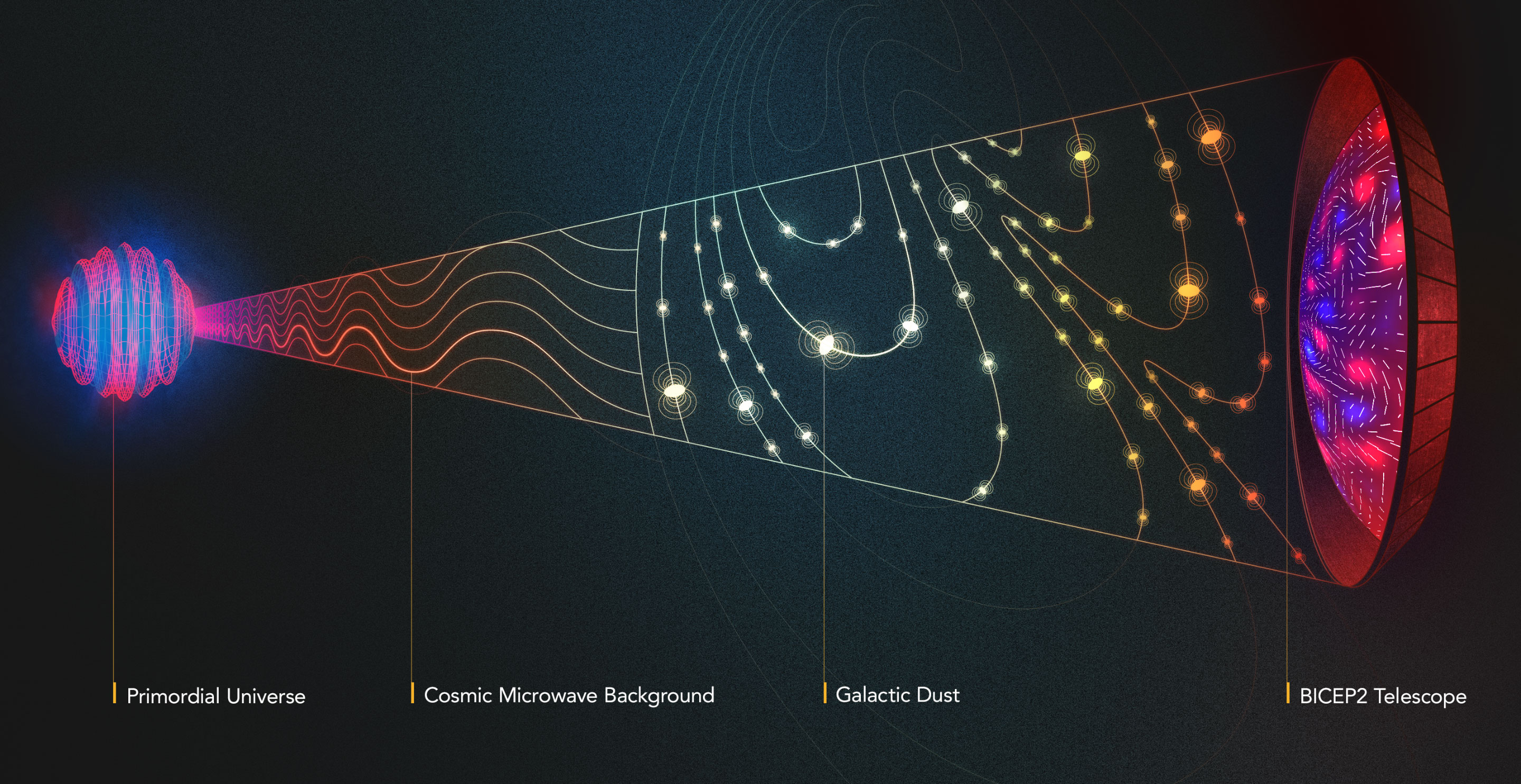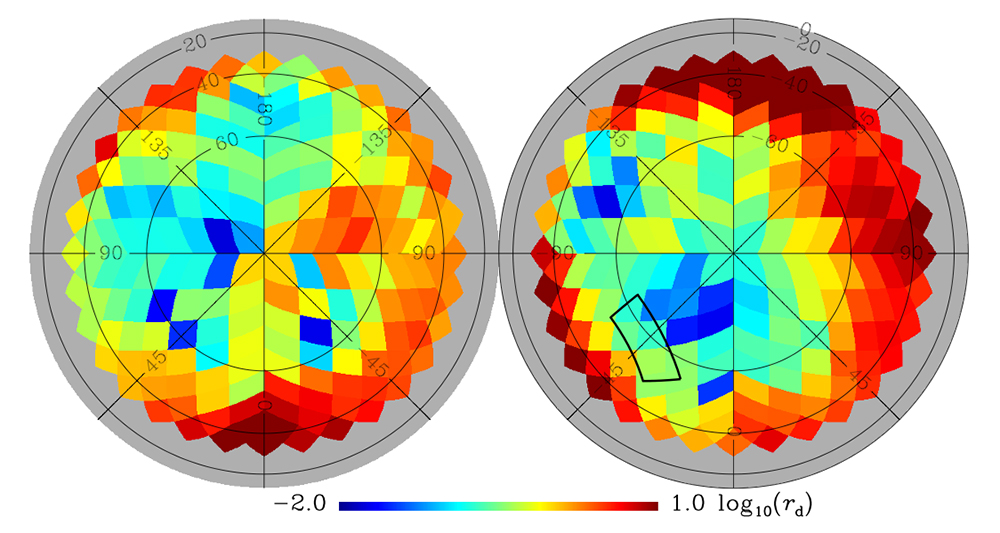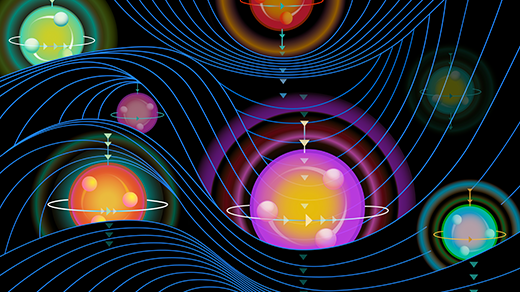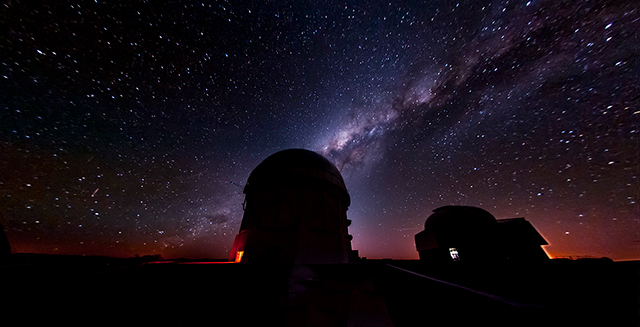‘Big Bang Signal’ Could All Be Dust

There was little need, before, to know exactly how much dust peppers outer space, far from the plane of the Milky Way. Scientists understood that the dimly radiating grains aligned with our galaxy’s magnetic field and that the field’s twists and turns gave a subtle swirl to the dust glow. But those swirls were too faint to see. Only since March, when researchers claimed to have glimpsed the edge of space and time with a fantastically sensitive telescope, has the dust demanded a reckoning. For, like a cuckoo egg masquerading in a warbler’s nest, its pattern mimics a predicted signal from the Big Bang.
Now, scientists have shown that the swirl pattern touted as evidence of primordial gravitational waves — ripples in space and time dating to the universe’s explosive birth — could instead all come from magnetically aligned dust. A new analysis of data (opens a new tab) from the Planck space telescope has concluded that the tiny silicate and carbonate particles spewed into interstellar space by dying stars could account for as much as 100 percent of the signal detected by the BICEP2 telescope and announced to great fanfare this spring.
The Planck analysis is “relatively definitive in that we can’t exclude that the entirety of our signal is from dust,” said Brian Keating (opens a new tab), an astrophysicist at the University of California, San Diego, and a member of the BICEP2 collaboration.
“We were, of course, disappointed,” said Planck team member Jonathan Aumont of the Université Paris-Sud.
The new dust analysis leaves open the possibility that part of the BICEP2 signal comes from primordial gravitational waves, which are the long-sought fingerprints of a leading Big Bang theory called “inflation.” If the universe began with this brief period of exponential expansion, as the cosmologist Alan Guth (opens a new tab) proposed in 1980, then quantum-size ripples would have stretched into huge, permanent undulations in the fabric of the universe. These gravitational waves would have stamped a swirl pattern, called “B-mode” polarization, in the cosmic microwave background, the oldest light now detectable in the sky.
But beware the cuckoo.
At a much-publicized March 17 news conference, BICEP2 team leader John Kovac (opens a new tab) of Harvard University announced that the group’s South Pole-based telescope had found evidence of B-modes (opens a new tab) that “matched very closely the predicted pattern” of primordial gravitational waves. After probing a region of space far from the dusty plane of the galaxy — “the cleanest patch of sky we can train our telescope on,” Kovac said — and measuring the polarization of incoming microwaves with 12 times the sensitivity of any previous experiment, he and his colleagues were convinced that they had detected proof of inflation.
But in the months following the announcement, outside experts cried foul, arguing that the scientists had used highly uncertain models of galactic dust emission that now appear to have underestimated dust contamination in the BICEP2 region. “The community as a whole underestimated it,” said Avi Loeb (opens a new tab), a theorist at Harvard who is not affiliated with BICEP2.
Had the BICEP2 telescope been capable of detecting B-modes at multiple microwave frequencies, the scientists could easily have distinguished between light from interstellar dust grains and the more ancient light they sought. Both light sources become brighter at higher frequencies, but dust emissions brightens more dramatically. By plotting the strength of the B-mode signal as a function of frequency, the scientists could have determined whether the curve resembled the shallow rise of the cosmic microwave background or the steeper rise of dust light.
Instead, the team opted for maximum sensitivity and designed their detectors to receive a single frequency: 150 gigahertz. “This was the Achilles’ heel of the experiment,” Loeb said.
With higher frequencies swamped by dust emission and lower frequencies by another “foreground” called synchrotron radiation, 150 gigahertz sat at a sweet spot with minimal contamination. But a single data point can lie on any curve.
Unable to directly determine the fraction of their signal that came from dust, the scientists relied on existing models of contamination in their patch of the sky — including data incorrectly extracted from a preliminary dust map in a Planck scientist’s PowerPoint slide — and concluded that dust could account for no more than one-fifth of their signal. After a group led by Raphael Flauger, now of Carnegie Mellon University, pointed out errors (opens a new tab) and the Planck team released (opens a new tab) better (though still preliminary) dust estimates, Kovac and his team revised their paper (opens a new tab) and hedged on their claim of a major discovery.
“They should have been much more cautious in their initial presentation,” said Lyman Page (opens a new tab), a cosmologist at Princeton University. “They should not have claimed measuring a primordial B-mode because the uncertainty on foregrounds is and was simply too large.”
Multiple frequencies were needed. From 2009 to 2013, the telescope on board the European Space Agency’s Planck spacecraft measured polarization throughout the sky at seven different microwave frequencies, though in any given patch roughly 100 times less sensitively than BICEP2. In their new analysis, Planck scientists partitioned the sky into patches the size of the BICEP2 observation region and calculated the amount of B-mode polarization present in each patch at 353 gigahertz, a high frequency where dust emission dominates the signal. Some of the other patches gave off only half as much dust light as the BICEP2 patch, making it, in Keating’s words, “not squeaky clean.”

The Planck telescope lacked the sensitivity to detect the faint B-modes at 150 gigahertz as seen by BICEP2, but by knowing roughly how dust emission varies with frequency, the scientists extrapolated down from its value at 353 gigahertz. They calculated that excess dust emission would produce B-mode polarization as strong as the signal detected by BICEP2, give or take roughly one-third of that strength.
“They more or less assumed that they could find a piece of the sky with low dust emission,” said Douglas Scott (opens a new tab), a cosmologist at the University of British Columbia who was heavily involved in the new analysis. “And the Planck result shows there is no part of the sky where you can ignore the dust.”
Exactly how much of the total B-mode polarization comes from primordial gravitational waves, if any, will be a matter of intense ongoing analysis. If there is a primordial signal, its strength, quantified by a parameter called r, will reveal the amount of energy that infused space-time and drove it apart during inflation. The energy scale of inflation would be a major clue as to why it happened.
“I can’t overemphasize how interesting this is,” Stanford University inflationary theorist Eva Silverstein (opens a new tab) said of the possible values of r during a recent talk (opens a new tab) in Chicago. Theorists like Silverstein most want to know whether r is greater or less than 0.01, the crossover point between categories called large-field and small-field inflation. The former would reveal details of an all-encompassing theory of quantum gravity.
Whereas the initial BICEP2 analysis pegged r at 0.2, corresponding to certain large-field inflationary models, the Planck study lowers its value much closer to 0. If the waves are detectable at all, a much more powerful telescope than BICEP2 will be needed to perceive them behind the swirly haze of galactic dust. Already, at least 10 existing or planned experiments have sufficient sensitivity to detect B-modes weaker than r = 0.1. The Atacama Cosmology Telescope (opens a new tab), South Pole Telescope (opens a new tab), and the combined BICEP/Keck Array (opens a new tab) all should be capable of measuring B-modes from gravitational waves within two to three years if the signal is larger than r = 0.01. A balloon-borne instrument called SPIDER (opens a new tab) will eventually achieve similar sensitivity.
To critics of the inflation idea, the heightened sensitivity of these experiments may be of little consolation. The theory is flexible enough to survive even if no primordial B-modes are found, making it virtually impossible to falsify.
“There are many models with r so small that you just wouldn’t see it with these experiments,” said Flauger, who helped develop a testable string theory model of inflation, with r = 0.07, with Silverstein and others.
Inflation will remain the leading Big Bang theory even if the entire BICEP2 signal fades to dust, said Mark Trodden (opens a new tab), a professor of physics at the University of Pennsylvania. It explains the smoothness and uniformity of the universe and gives a mechanism for structure formation, he explained — “but all this evidence is highly circumstantial.”
Confirmation of primordial gravitational waves would have locked the theory down, resolving once and for all the picture of the beginning of time. Now, “the jury is still out,” Keating said.
A joint analysis of data from Planck and BICEP2, which is expected to appear in November, could determine whether any primordial B-modes are mixed with the dust swirls in that clean, but not squeaky clean, patch of sky above the South Pole. By collaborating, Kovac said, the teams should be able to put a new upper limit on the value of r — an assurance that primordial gravitational waves must be weaker than a certain strength, if they exist at all — that “relies on data, not models” of dust contamination.
“I can promise that we are approaching the analysis with a completely unbiased attitude,” Kovac said. “We are as eager as everyone else to see the uncertainties reduced here, whatever the final answer.”
The success of BICEP2, Loeb said, was in increasing the sensitivity by an order of magnitude compared to previous experiments. “Definitely they detected something,” he said. “The significance of that depends on what the interpretation is. If it’s dust, it has no cosmological significance whatsoever.”
This article was updated on Sept. 22, 2014, with additional details, and was later reprinted on Wired.com (opens a new tab).



